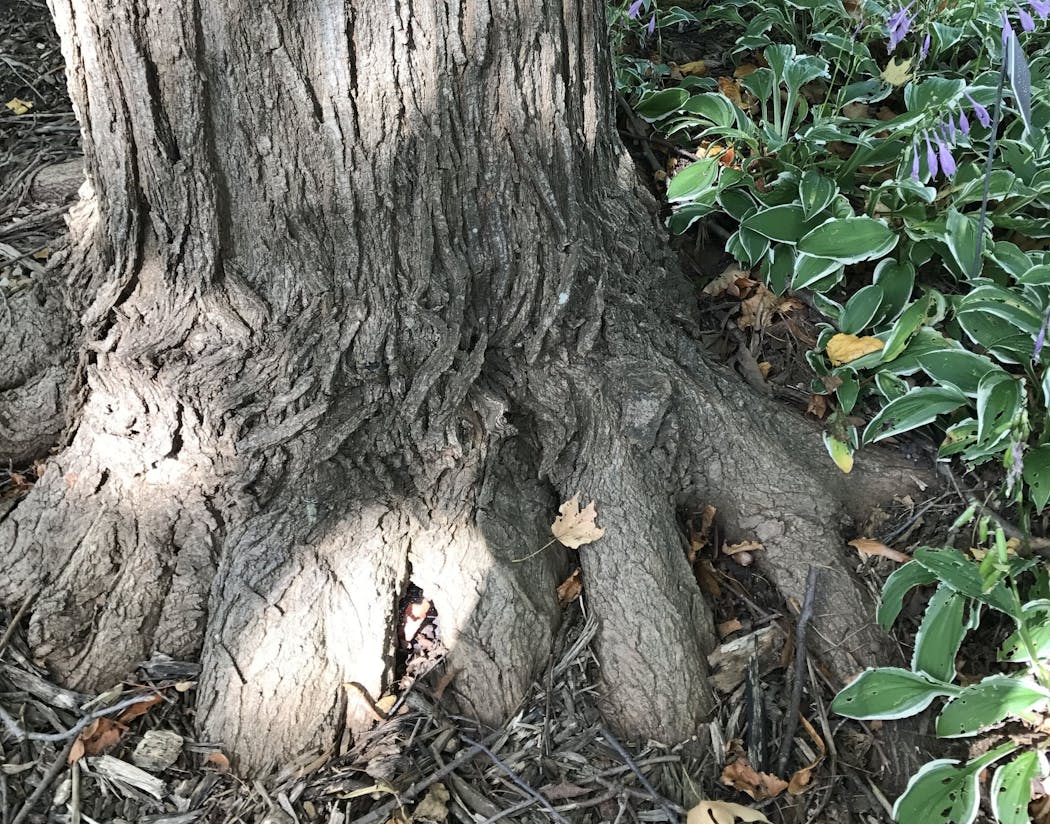The fall foliage season is a bit ahead of schedule this year — but that's not why maple trees all over the Twin Cities have been turning color and dropping leaves, weeks before official autumn.
It's a warning sign that there are a lot of sick maple trees, according to Alan Branhagen, director of operations at the Minnesota Landscape Arboretum.
"It's becoming epidemic," he said of the distressed, yellow-leafed maples, some already with bare branches, that have raised curiosity and concern this growing season.
The Arb has been flooded with questions about early leaf drop on maple trees, he said, and last week posted a response on Facebook. "I haven't seen any healthy maples with early fall color."
Joe Noonan, who planted several sugar maples outside the window of his Golden Valley office, can't figure out why one is ailing while the others are thriving. He had a soil test done (the results showed adequate nutrients) and tried to stimulate the tree with fertilizer. Nothing has worked.
"Leaf drop started a month ago," he said, and the tree is already more than half bare. "It's a mystery. It hurts."
At the Davey Tree Expert Company, "the phone has been ringing off the hook about it," said certified arborist Travis McDonald, Eden Prairie.
Many of the maple trees in distress are suffering from root girdling, a condition in which roots grow around another root or the trunk, eventually strangling the tree. "It pinches off the vascular system so it can't provide nutrients to the tree," McDonald said.
Maples are prone to root girdling because they have fast-growing, shallow root systems. The condition is becoming more common because most trees sold at nurseries and garden centers are now grown in containers (as opposed to a field), resulting in roots that have already begun to spiral before the tree is even purchased and planted.
We're seeing a lot of distressed maples now because many of the early container maples planted in the Twin Cities are now mature. "They're all getting to that age — 20 to 30 years," Branhagen said.
And sick maples are particularly noticeable in the landscape because there a lot of maples in Minnesota. "Maples are so popular here," said Branhagen.
How can you tell if your maple tree has root girdling? If it's losing leaves prematurely, including whole sections near the crown, take a look at the base of the trunk. If it grows straight into the ground — "like a telephone pole," Branhagen said — with no root flare, the roots are probably girdled.
"It's not necessarily a death sentence," he said. "If you can get rid of the girdling root."
Some tree experts use a high-pressure air spade to blow soil away from the roots and expose the problem area, McDonald said. It's possible to cut away girdling roots, but cutting too much at once can kill the tree.
Root rot is another condition causing maple decline, Branhagen said. Irrigation systems that pump water into the landscape, combined with a thick layer of mulch, can result in conditions too soggy for some maples. "Sugar maples like it moist but not wet," he said.
Maples also are susceptible to a variety of vascular diseases, said McDonald, who advised homeowners with a distressed tree to consult a tree expert. An expert can diagnose the problem, explain what can be done and make an assessment as to whether the tree is "save-able or too far gone."
Pruning out dead, bare branches will help a sick tree look less sickly, but won't address the root problem, he added.
The bad news for homeowners is that many distressed maple trees probably should be removed. "They can become a hazard," Branhagen said. "Without the stability of the root system, they're more prone to windfall. They can snap off at the base." The Arb has had to remove several ailing maples this year.
If you do have to remove a maple tree and want to replant, there's no reason not to plant another maple. If it's container-grown, make sure to unwind the roots before planting. "Flare them out, like an octopus," Branhagen advised.
And look for square containers, with air pockets, which some growers are now using to prevent roots from spiraling, said Branhagen. "That helps cure this problem."
NPR suspends editor who criticized his employer for what he calls an unquestioned liberal worldview

Salman Rushdie's 'Knife' is unflinching about his brutal stabbing and uncanny in its vital spirit





